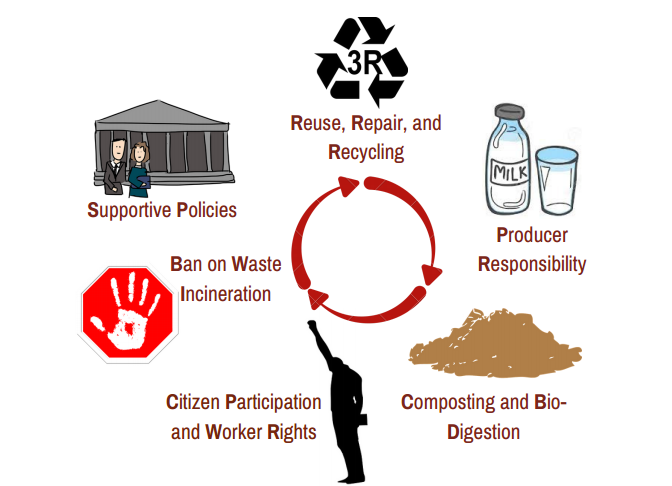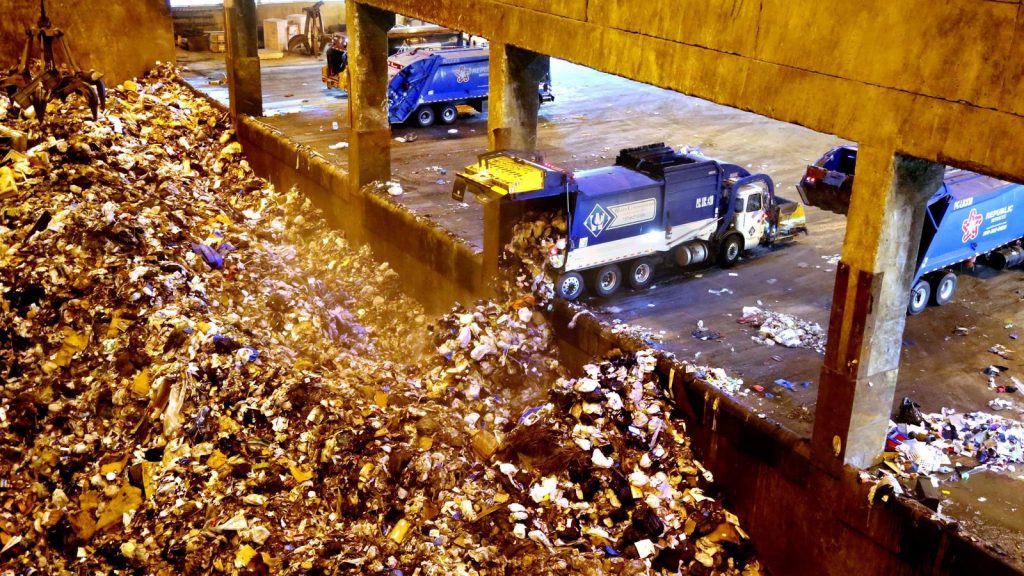
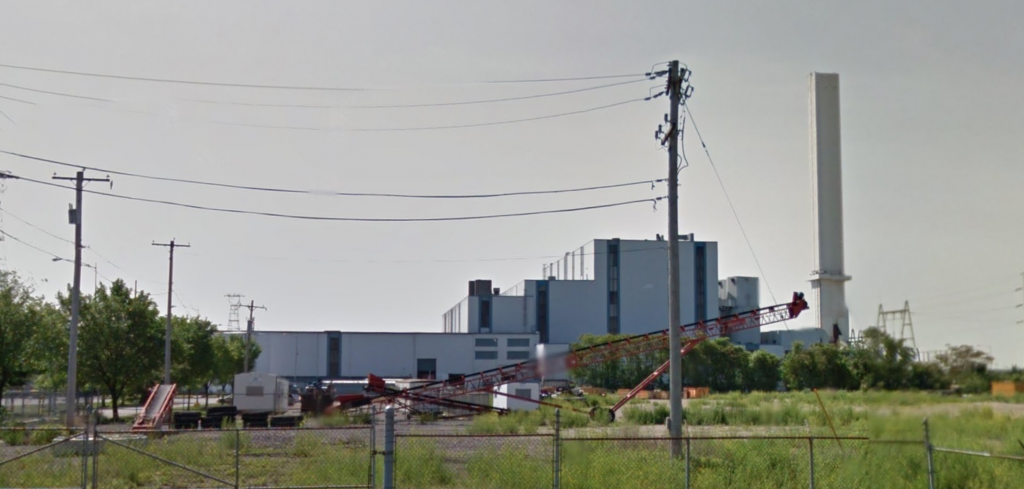
Incinerators
One of the largest recipients of Philly’s trash for many years has been the Reworld (formerly Covanta) Delaware Valley trash incinerator in nearby Chester City, just south of the airport. 36% of Philly’s trash is burned: primarily in Chester, but also in four of Pennsylvania’s five other incinerators. Philadelphia is surrounded by the largest cluster of trash incinerators in the U.S., and all five (3 in PA, 2 in NJ) are among the top 7 industrial air polluters in the Philadelphia metro area.
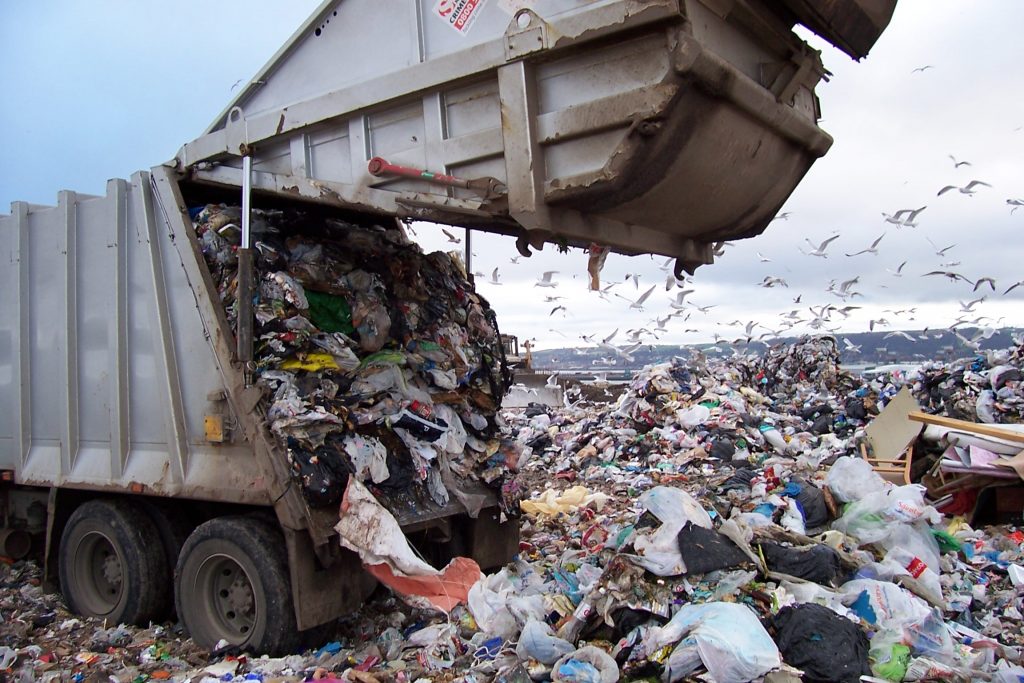
Landfills
12 Pennsylvania landfills also receive waste from Philadelphia, not including additional landfills that take the ash from the incinerators burning Philly’s trash. While landfills are a serious problem, incinerators are far more polluting, and ash in a landfill is more toxic and threatening to groundwater than unburned trash. It’s not the size of landfills that is harmful, but the toxicity. Incinerators are worse for the climate than landfills.

Recycling
Recycling markets are strong. Even plastics have a strong market. This could generate income for the city if managed properly. However, the Philadelphia Sanitation Department still fails to even collect recycling separately in some neighborhoods. The Department needs to start tracking when they send out a recycling truck on a route, or when both are mixed in the same truck. They also need the right leadership to provide the proper education and incentives for residents to reduce waste.
Who decides where our trash and recycling goes?
Collection of trash and recycling is the job of the Philadelphia Sanitation Department. This was formerly done by the Streets Department until May 2024 when the Sanitation Department was separated and placed under the new Office of Clean and Green by an Executive Order of Mayor Cherelle Parker. The city collects residential curbside trash and recycling for residential dwellings of six units or fewer. Larger apartment complexes use private collection companies. For the waste collected by the Sanitation Department, there are two contracts for where that trash is taken. 2/3rds of the trash goes to Waste Management, Inc. (now just called WM), the world’s largest waste corporation, and primarily goes to the Fairless Landfill in Bucks County, and other landfills. The other 1/3rd of the trash goes to Covanta (now called Reworld), the nation’s largest trash incineration corporation, where over 75% of that is burned in the City of Chester, and much of the rest is burned at Reworld’s incinerator in Plymouth Township, Montgomery County, just north of the city.
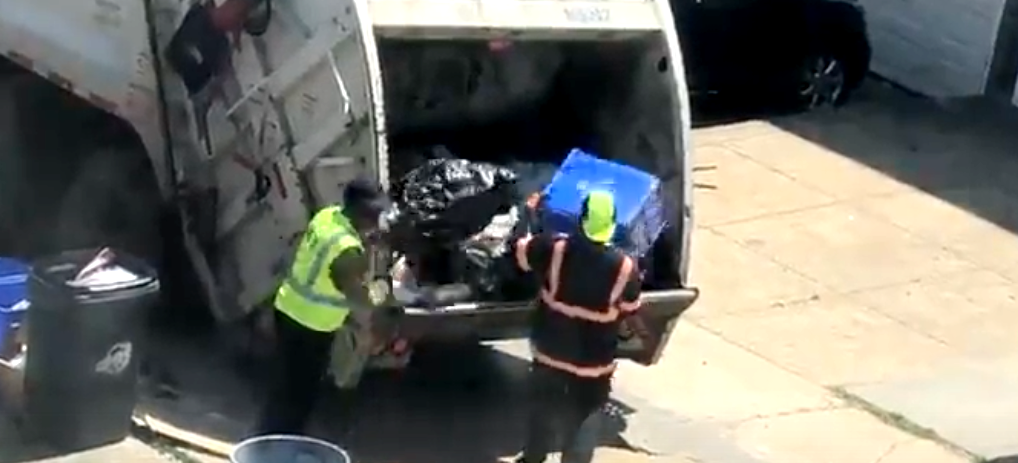
Is Recycling Dead?
Short Answer: NO!
Philly’s Recycling Rate History
Historically, Philadelphia’s recycling rate has been miserably low and stood at just 14% in Fiscal Year 2025. This is due to a long-standing lack of leadership by the Streets Department (now the Sanitation Department), including actions where recycling has been illegally trashed by the city by dumping separated recyclables in with trash during collection, in violation of Pennsylvania’s recycling law, Act 101 of 1988.
- March 1, 2018: China stops taking USA’s poorly sorted recyclables, resulting in a spike in domestic recycling costs. Republic, the nation’s second largest waste corporation, quoted an outrageously high price to accept Philadelphia’s recyclables.
- October 2018 – May 2019: Philadelphia’s Streets Department chose to burn half of the recyclables residents separated for city collection at Covanta’s trash incinerators in Chester and Plymouth.
- March 2020: Philly trashed recyclables due to the COVID-19 pandemic. This was part because of sanitation workers falling sick. Part is also due to more waste being generated at people’s homes due to lockdown and people working remotely from home. Since the Philadelphia Streets Department collects residential curbside trash, but not commercial waste, this meant that the Streets Department had to collect far more trash with fewer workers available.
- November 2020: The Streets Department admits that they’re collecting trash and recycling in the same trucks, trashing recycling, and claims that the decision on whether to mix trash and recycling is done each morning for each route. They claim not to be able to figure out a way to warn residents whether recycling will be trashed. They claim that the problem is basically solved and shouldn’t happen any longer.
- May 2021: The Streets Department claims they are no longer trashing recyclables, and now blames sanitation workers for this practice continuing, claiming that it must just be isolated cases. However, residents have recorded this taking place across the city. It’s clear that sanitation workers are not at fault, and that Streets Department supervisors are still ordering the trashing of recycling on certain routes.
- 2025: the city (now under the Sanitation Department) continues to trash recycling in some neighborhoods, still blaming it on rogue sanitation workers, even though it’s clear that this cannot be the case. In one neighborhood, we have documented that recycling has been trashed over 60% of the time over a span of four years.
Recycling Markets Are Strong!
Imagine a typical recycling bin sitting on the curb waiting for pick up. The graph on the left breaks down what is normally found in that recycling bin. The graph on the right shows how much each of those items are worth per ton. The first fives are types of plastics. Aluminum is historically worth the most, but one type of #2 plastic is now worth more than aluminum! Four of the five most valuable recyclable materials are now plastics. These two graphs illustrate that recycling can make Philadelphia money.
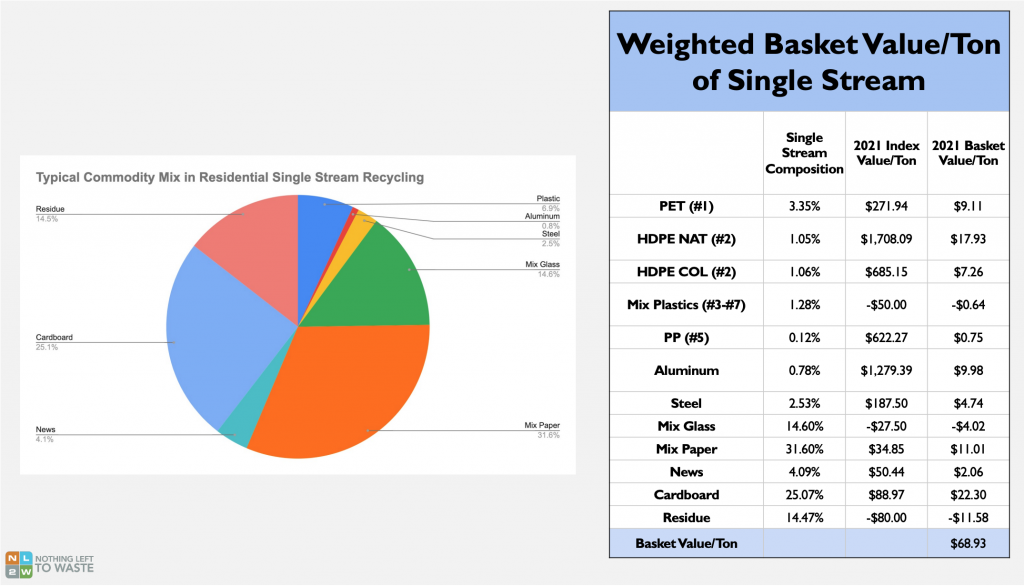
We have major recycling industries in the Philly area, such as Newman Paper in Northeast Philly, AeroAggregates recycling mixed glass in Eddystone (Delaware County), and Strategic Materials also recycling glass in Delaware County.
So… How Do We Build A Zero Waste System?
